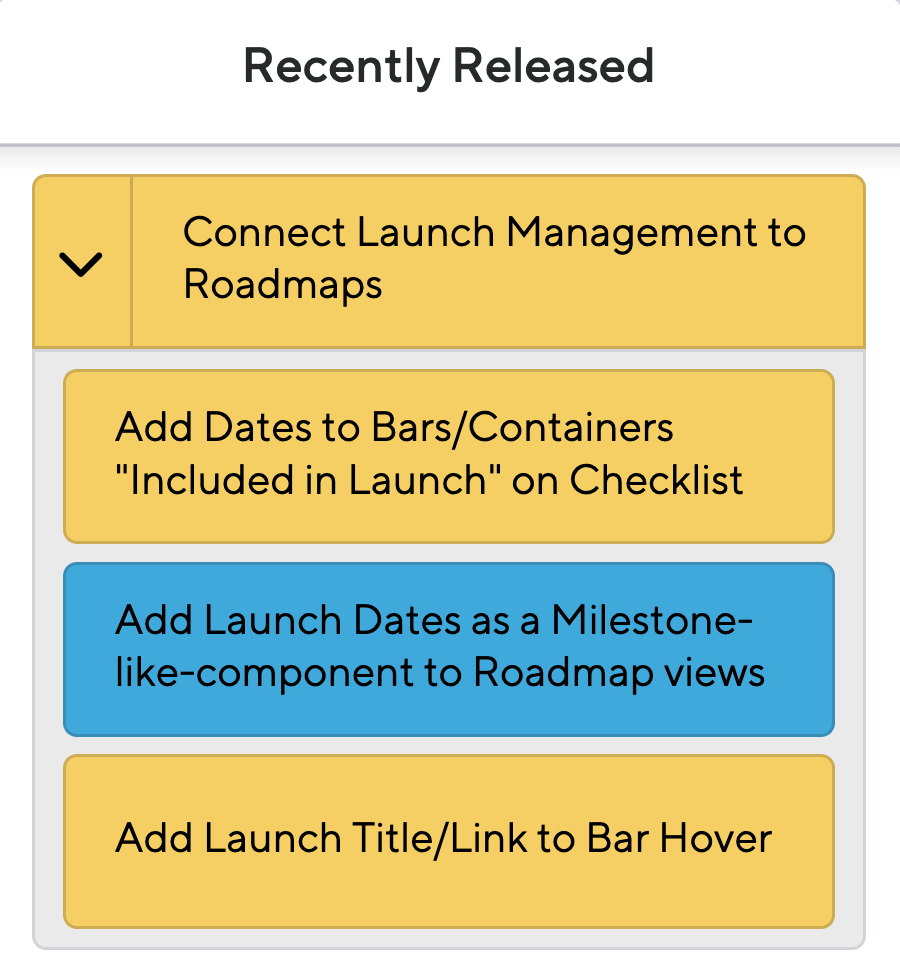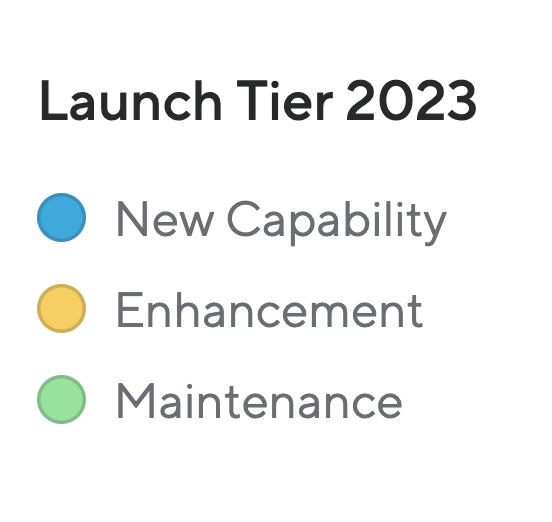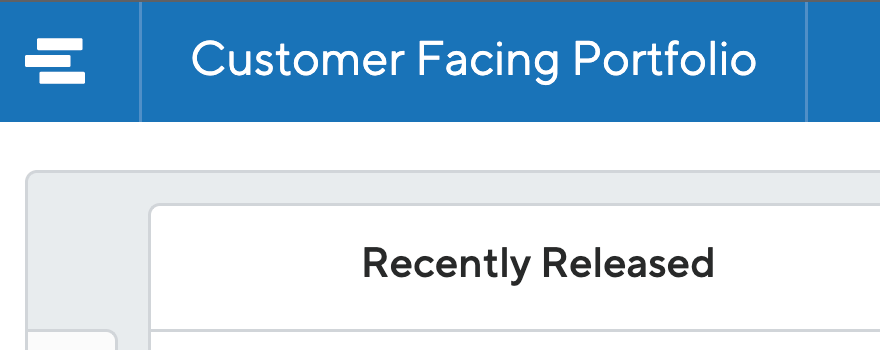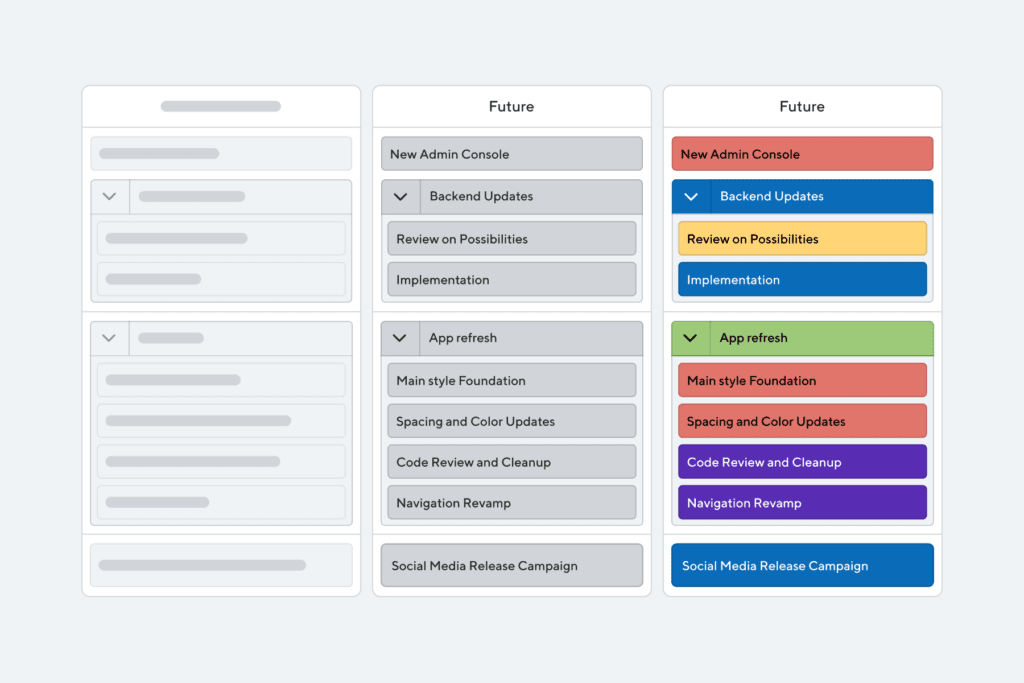The only constant is change. We know the saying, but more than that, we live the saying. ProductPlan has consistently seen changes over the past 12 months, and our very own product roadmap has been a part of that journey. We’ve seen a little bit of everything, and the customer-facing roadmap has been critical during these changes.
As annual planning took shape, it became clear the 2022 customer-facing roadmap needed to evolve. Our audience has expectations and we need to meet them (if not exceed them). “Why” and “how” are the main questions we want to cover in the roadmap’s pivot to its current iteration.
Five questions to answer
For this exercise, we go all the way back to square one. It’s almost (almost) as if the 2022 roadmap doesn’t exist. Thankfully, we have it as a baseline! The product team began by conducting a few internal and customer interviews to gather feedback on the 2022 roadmap. We wanted to know what worked and what could be improved. As we chatted with our respective audiences, the team came up with a framework for how to evolve the roadmap.
As shaping continued, the product team revisited the five questions to keep in mind before roadmapping. The first one to discuss focuses on the roadmap’s intended audience.
As we keep these questions in mind, we’re also going to look at this evolution through the lens of ProductPlan features. The overall taxonomy of the roadmap informs and complements these questions. With that said, we’ll focus on lanes, legend, tags and even custom views. When I write the 2024 version of this article, I have a feeling custom dropdown fields will play a major role. Stay tuned until then!
Who is our intended audience?
Let’s start with the intended audience for the 2023 roadmap. Who was this in 2022, and has it changed for the year ahead? These roadmaps have both primary and secondary audiences. Starting with an external need for our customers and then looking to the internal ProductPlan team, the roadmap must provide value for people with varying degrees of product familiarity. While there might be new members of the ProductPlan team and new customers, the overall audience remained consistent from 2022 to 2023. Ultimately, this is a customer-facing product roadmap. The secondary use would come for the product team as we organize our workload and present to the internal ProductPlan community.
With the primary audience, the lanes and legend saw an evolution from 2022 to 2023. We’ll dig into this soon.
How will we be sharing our roadmap?
Now that we know the audience, how will the roadmaps be shared with these groups? When it comes to the externally-shared roadmap, we exclusively share via video calls. As much as we want the roadmap to speak for itself, we still need to ensure the ProductPlan team is able to share context as to what’s being worked on and any changes ahead.
As for the secondary audience, reviewing the roadmap has become more ad hoc for the internal ProductPlan team. Meetings are less frequent as we’ve found ways to better document necessary information. Everyone in the company has viewer access, but only the product team has editor access. In monthly roadmap update meetings, the product team presents product updates via the roadmap. These are less frequent than in past years. In addition to the monthly cadence, videos are shared on a more ongoing basis (thanks Vimeo integration)!
I review the roadmap at the end of every week. This gives me the ability to track what’s currently being worked on and coming soon. I know things will change as the team and roadmap are dynamic!
What are we trying to communicate and answer with the roadmap?
Having defined the audience for the year ahead, we then focus on what the roadmap is meant to communicate (and consider whether this changed over the past year)? While the actual features on the roadmap may have changed from 2022 to 2023, the way they are communicated has remained fairly consistent. As the audience for the roadmap, we are presented with a list view by tag. Those tags are “Recently Launched,” “Now,” “Next” and “Future.” This custom view gives us (the audience) a streamlined, simple draft that’s easy to understand. It reduces any extra noise and communicates the broad plan without getting too specific with dates and intricacies.
Continuing along this path, what questions do we want the roadmap to answer for the audience? The roadmap remains a high-level, strategic tool. The audience doesn’t need to know exactly how the sausage is made. We just want to know why and when the sausage is going to be delivered! The use of containers became necessary in 2023 as more development and overall work was scheduled to occur. The product team grew and thus the workload expanded. There were more intricacies to manage. The team began employing both bars and containers rather than simply containers as was the practice in 2022.
Hierarchy of the customer-facing roadmap

The lanes and legend are the two most important elements of the roadmap. Ideally the legend will answer the audience’s most pressing question. Both the 2022 and 2023 roadmaps have ProductPlan objectives at their core, but there’s an evolution to these objectives. For 2022, the objectives focused more on product development and features. We saw the 2023 evolution take on broader brushstrokes. The prior was focused on Launch Management while early 2023 has seen a focus on Idea and Opportunity Management. Major projects related to integrations and new modules take centerstage. Of course, roadmaps are dynamic and we know this will continue to evolve. Sharing it with customers has been a beneficial way to get feedback and influence that evolution!

Lanes underwent a similar transformation. The 2022 lanes were centered on ProductPlan competencies with the core product, integrations and platform enhancements. As planning was underway, the addition of new product managers meant more content on the roadmap. Lanes were going to be more important than ever.
It’s important to note that our customer-facing “roadmap” is a Portfolio made up of each product manager’s roadmap. Their underlying roadmaps are represented as lanes in the Portfolio. This makes it easy for each PM to edit, but also get a consolidated view. It also added an extra layer of organization as we planned for resources and development. Does each product manager have the same workload and resources? The 2023 roadmap gives a better answer to these questions.
The 2023 roadmap also saw the addition of more tags. The only tags for 2022 provided the Kanban style view. The tags for 2023 give us more about departments, company goals and product stages. We’re able to drill down into specifics and what each audience member (internal and external) truly wants to see.
How far out are we planning?
Finally, we ask ourselves how far out are we planning? The roadmap remains consistent with the now, next and future presentation. We know the current quarter has around 80 percent accuracy. As we move further out to the future status, we’re aware the roadmap is going to lose a bit of that specificity and integrity.
The way our product team releases their work also changed from 2022 to 2023. In 2022, we released on a two week sprint cycle. That evolved to weekly sprints in early 2023 and now dynamic, potentially daily releases. We’ll see if that brings any additional updates to the roadmap!
Stay tuned for whatever changes occur next…we know they’re coming!
If you want to take a look at the 2023 roadmap with your customer success manager, please reach out, and we can get that scheduled. We’re also hosting an office hour to chat about the roadmap evolution and answer any questions you may have. If you want to pop by, please reach out to support@productplan.com.



